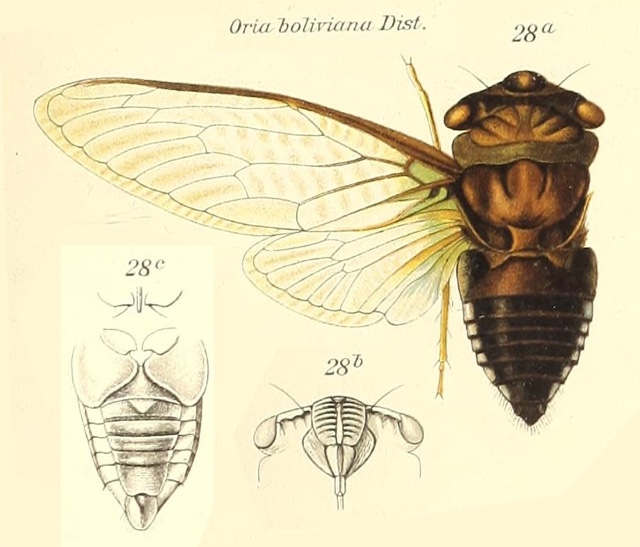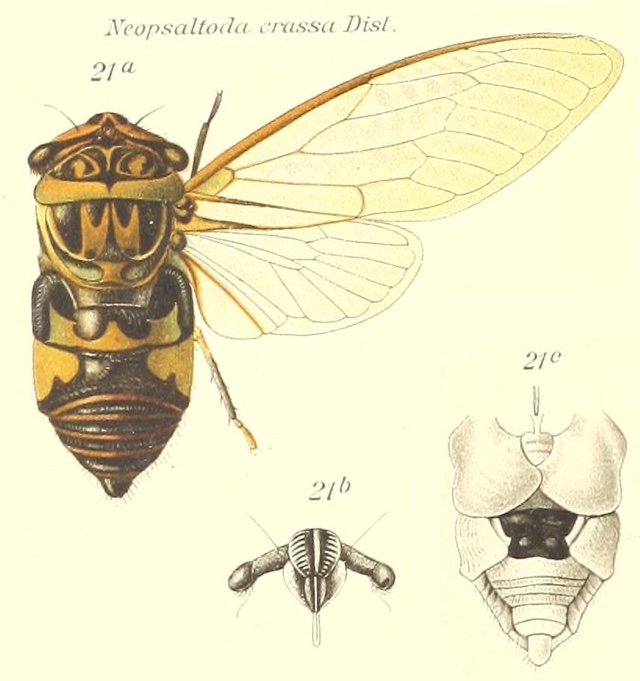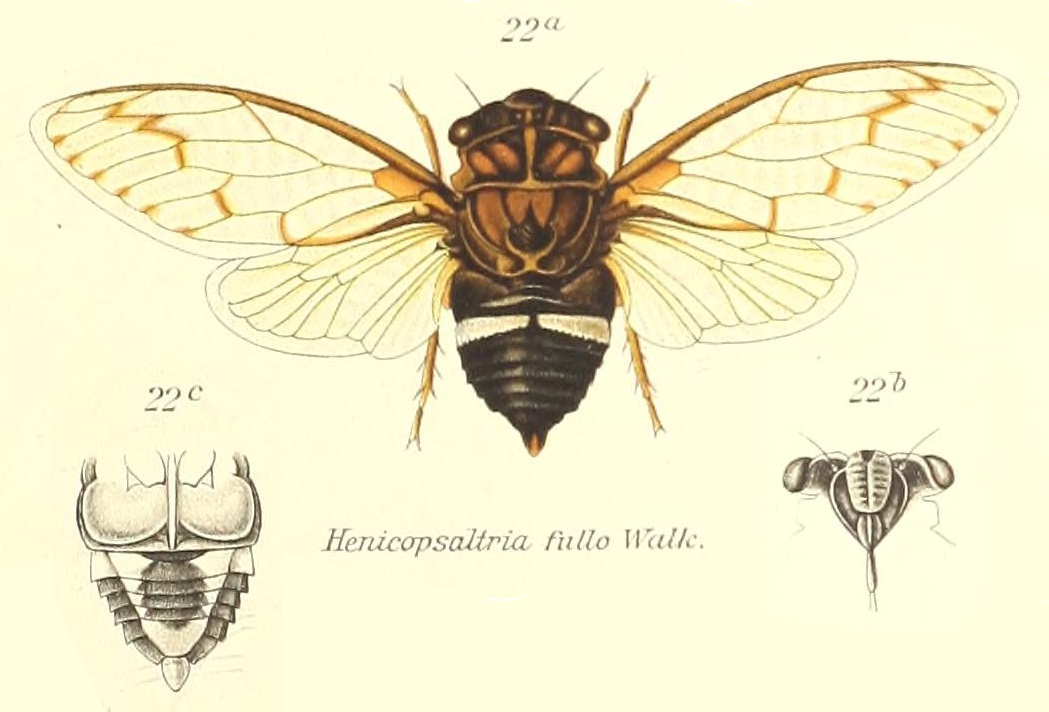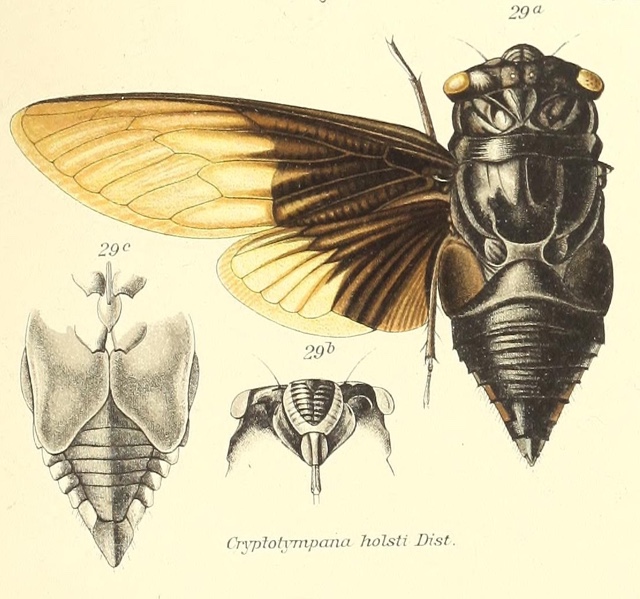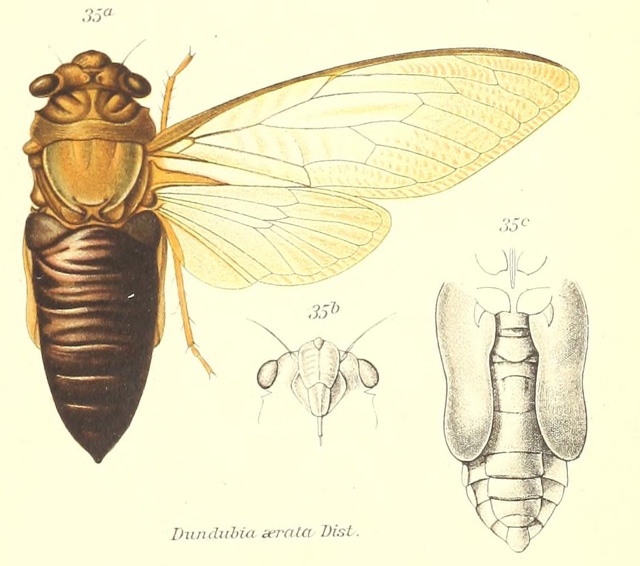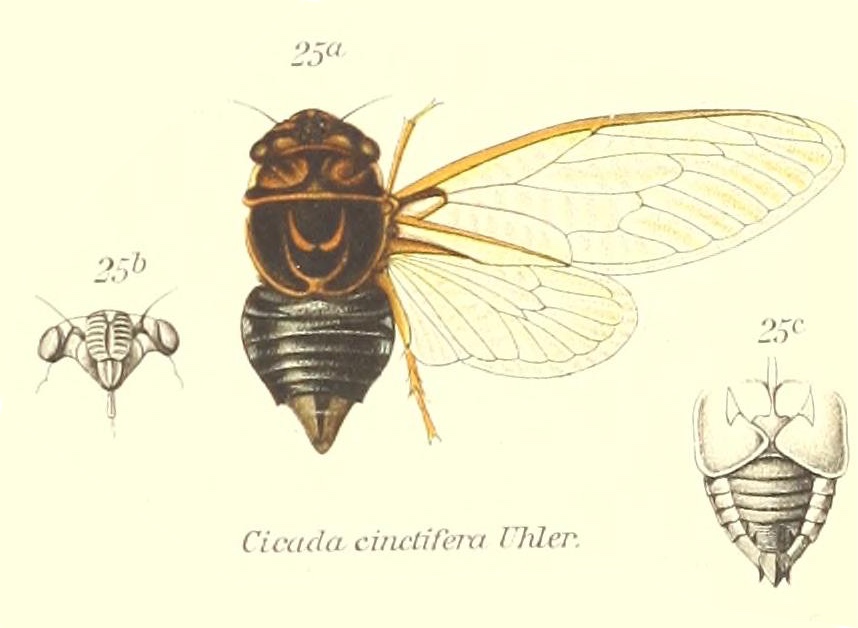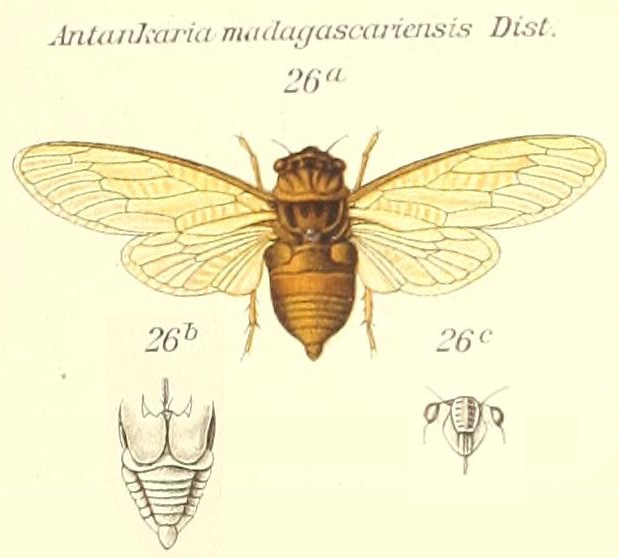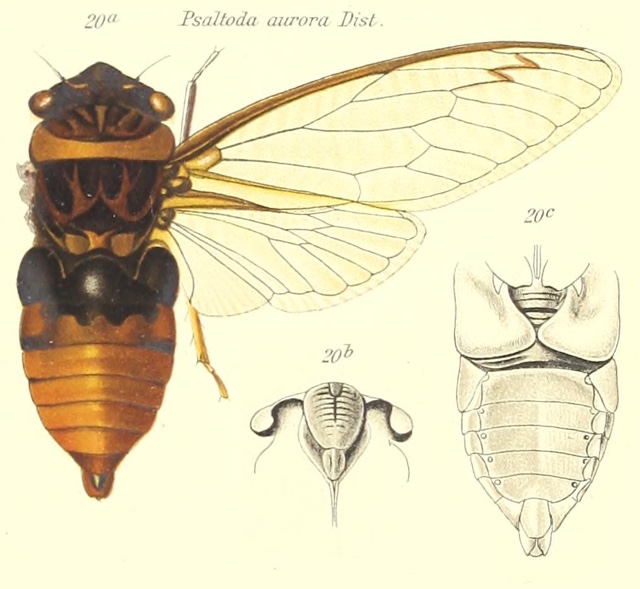Oncotympana nigristigma (Walker, 1850) used to be called Dokumu nigristigma (now its a junior synonym). Yes, its name has changed since 1913!
This cicada is found in the Philippines.
Scientific classification:
Family: Cicadidae
Subfamily: Cicadinae
Tribe: Oncotympanini
SubTribe: Oncotympanina
Genus: Oncotympana
Species: Oncotympana nigristigma (Walker, 1850)
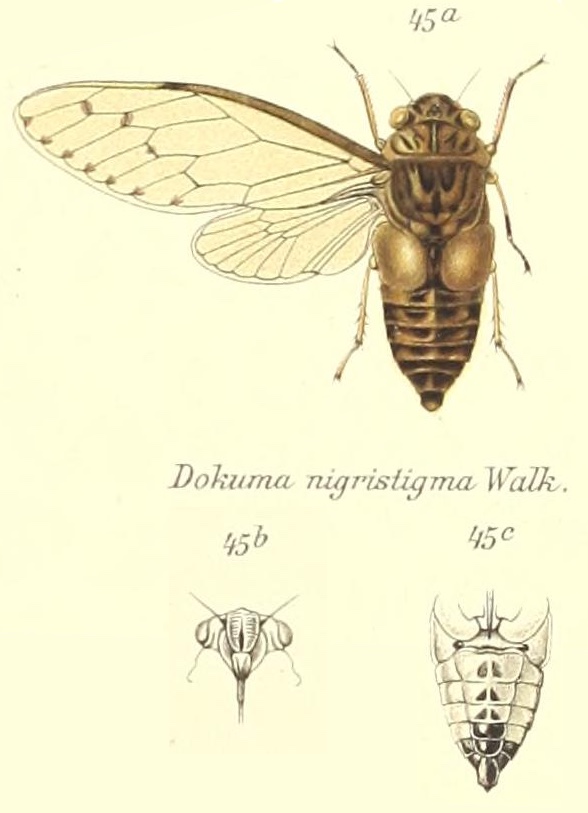
Oncotympana genus description by W. L. Distant:
Characters. — Head (including eyes) nearly as wide or distinctly narrower than base of mesonotum, its length about or nearly equal to space between eyes; pronotum considerably shorter than mesonotum, its lateral margins a little convex, its posterior angles ampliated; mesonotum large, convex; abdomen in male short, broad, about as long as space between apex of head and base of cruciform elevation; tympanal coverings very globose and projecting beyond the lateral abdominal margins; opercula m male short, transverse, with their disks a little convex; anterior femora spined beneath; rostrum passing the posterior coxae ; tegmina and wings hyaline, the first usually more or less maculate, apical areas eight, venation normal.
References:
- The illustration and genus description comes from the journal Genera Insectorum, and a specific article from 1913 by W. L. Distant titled Homoptera. Fam. Cicadidae, Subfam, Cicadinae. Read it on the Biodiversity Heritage Library website.
- Current species name verified using Allen Sanborn’s Catalogue of the Cicadoidea (Hemiptera: Auchenorrhyncha).
